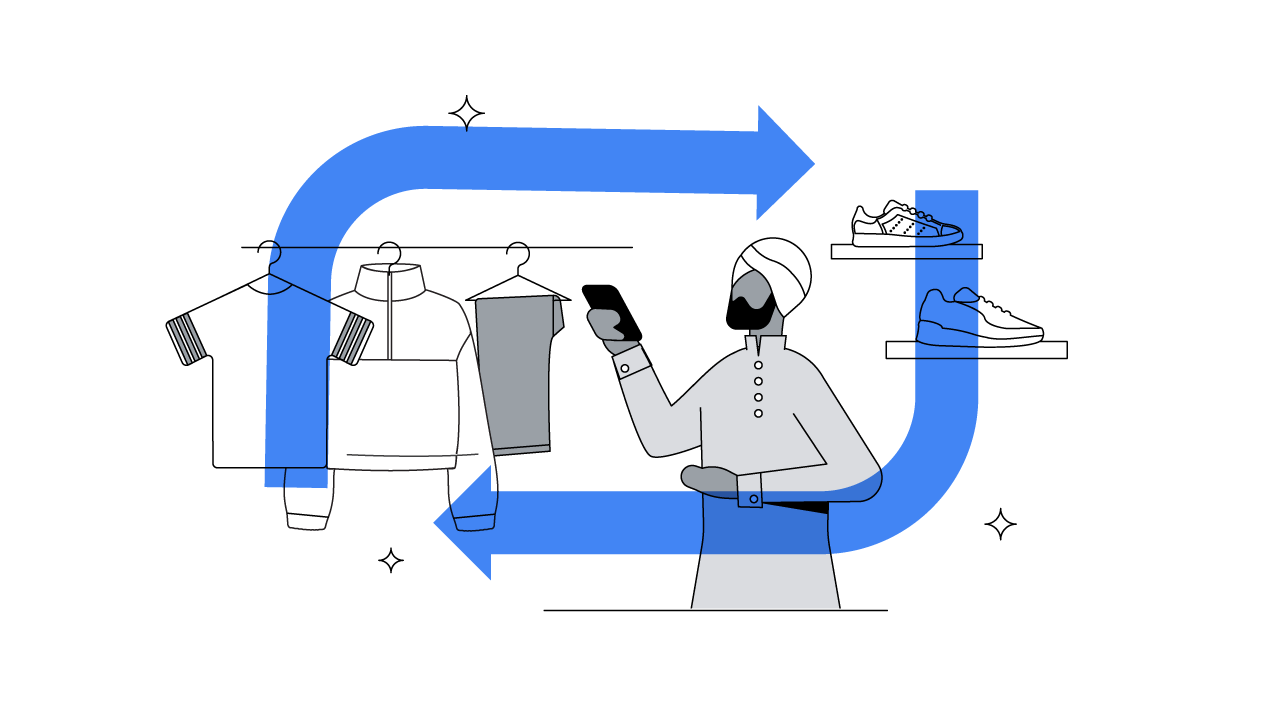Johnny Jansen and Jerry Jacobs are responsible for Search at VodafoneZiggo, a Dutch company offering fixed, mobile and integrated communication and entertainment services to consumers and businesses.
Search engine advertising (SEA) has always been a big part of our marketing strategy at VodafoneZiggo. However, we knew that there are trillions of Google searches every year — and 15% of those have never even been searched before.
This volume of searches, and the variety of those searches, can make it really challenging to show up for consumers in the moments that matter. Even more so when you want to appear at the very top of the search results to encourage new people to find you.
That’s why we set ourselves a challenge: to evolve our Search strategy and improve our customer acquisitions.
We knew that businesses using broad match, a keyword match tool that allows your ad to show on searches related to the meaning of your keyword, can see an average of 35% more conversions.1 So, we tested broad match, with the branded keyword functionality, in combination with a custom built script that used two algorithms to measure similarity and differences between search results.
The results were impressive. By combining these we increased our conversions by 40%. This is how we did it…
The experiment: The search for new customers begins
We have a pretty experimental culture at VodafoneZiggo. We know what we want to achieve and we can be quite flexible within that. We adopted several features to help us ‘dial up’ our Search strategy and reach one of our goals: new customer acquisition.
We started our experiment with broad match with brand control keywords. It allows our ads to appear when a customer searches for any variation of a term. For us that meant if someone searched "internet abonnement ziggo" matching to "ziggo tv internet pakket", even though the two aren't exactly the same.
Knowing broad match offers unique signals compared to exact and phrase match — such as: information on the landing page, previous searches, and other keywords in the ad groups — we wanted to put it to the test.
After implementing these keyword features into our campaign to find new customers, we double-checked the results. To do this we built a script that pushed all search term data from our selected campaigns in our Ads account to a Google Sheet.
In that script, we built in two different ways to measure the similarity, or the distance between the keywords and the search terms. They are called Levenshtein distances and cosine similarity. They’re quite technical but extremely useful for comparing and matching data like keywords, and to check whether broad match was matching the intent on a query level.
Create keyword insights from search results
We now had all our keyword and search term data, and we could begin to see how far off or similar these were. We used a formula, taking into account the distance and similarity scores, and based on that we assessed the search terms.
We could see on a detailed level that broad match was bringing in searches that were highly relevant to the keywords.
We let the script run for approximately six weeks, including a learning phase and accounting for conversion delays. This duration allowed us the opportunity to thoroughly analyse the data we were collecting.
During our analysis, we found several intriguing findings.
Firstly, the number of unique search terms doubled. So we were capturing twice the volume of searches compared to our previous approach, when we favoured exact and phrase match over broad match.
Our second insight was around loose-fitting searches. We offer television packages for the ESPN Sports Channel and broad match was able to show our ads to people even when they were using loose-fitting searches or misspelling their search, such as ‘EPSN’.
Additionally, we stumbled upon unexpected search terms that proved effective in driving conversions.
Everything aligned perfectly within our TV packages keywords ad group. We observed a significant increase in conversions during the test period, along with a multitude of search terms, both known and unique, that were absent from our previous data. This gave us the chance to meet customer demand for our products that we were missing out on before changing our Search strategy.
A winning formula: Consistent sales funnel growth
Our results were fantastic. We achieved a 40% increase in conversions, with a modest 4% increase in the cost per acquisition. Conversions, which represent our primary goal as they signify sales on our website, showed this impressive growth solely from new customers.

Additionally, we identified consistent growth at various stages of the sales funnel. Moving from entering a zip code to the 'add to cart' phase demonstrated a 2% increase, while the transition from 'add to cart' to the final sale recorded an impressive 9% upturn.
Lastly, we experienced a remarkable 140% surge in cross-selling, where customers, initially interested in a TV and internet package, also opted for additional add-ons.
Broadening horizons: Expanding our search strategy…
Our search strategy has undergone significant refinement since the beginning of our journey. Throughout this period, we've acquired valuable insights and our approach has proven instrumental in achieving our customer acquisition objectives.
We are now actively pursuing automation for the final stages of our strategy using Google Sheets. This automation serves three primary purposes:
- Streamline the workflow and automatically exclude non relevant keywords, and add or create keywords in the right ad groups
- Expand the new search strategy to more campaigns
- Trial non-branded broad match
If we could offer one piece of advice for other brands who are thinking of ramping up their search strategy, it is to always experiment and learn. I think Einstein is quoted as saying: “The more I learn, the more I realise how much I don't know” and I really love that.






